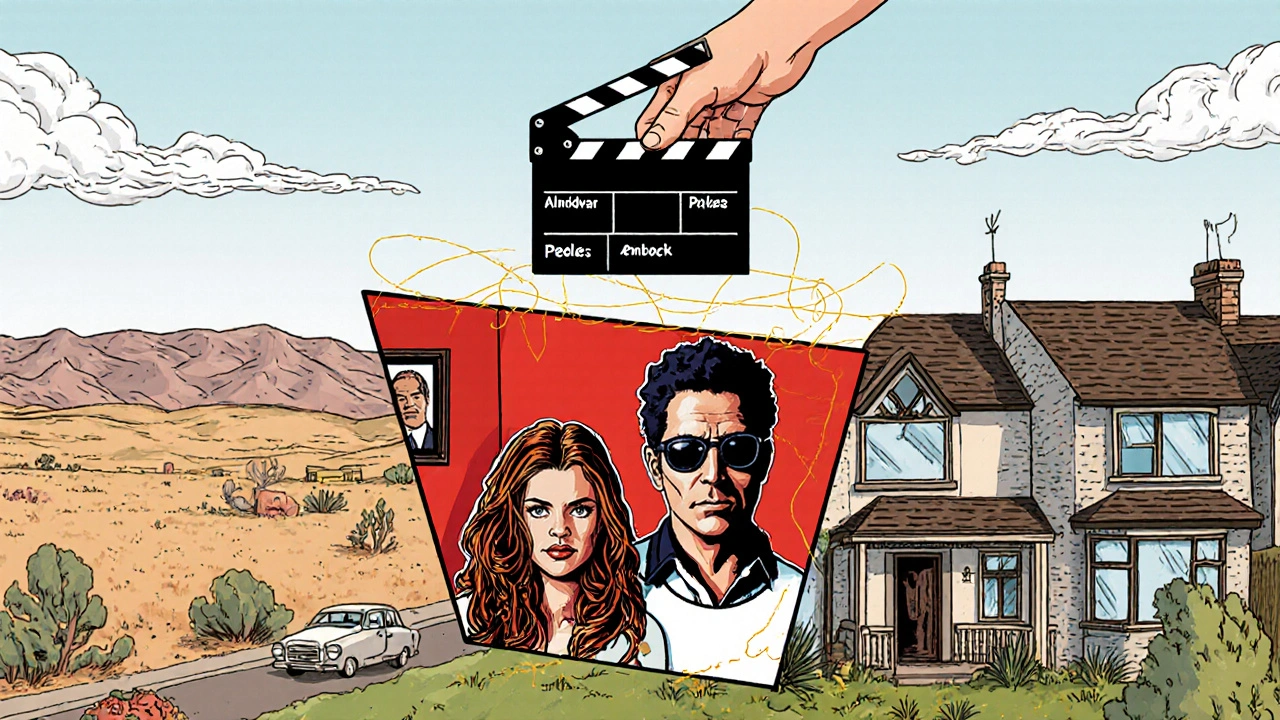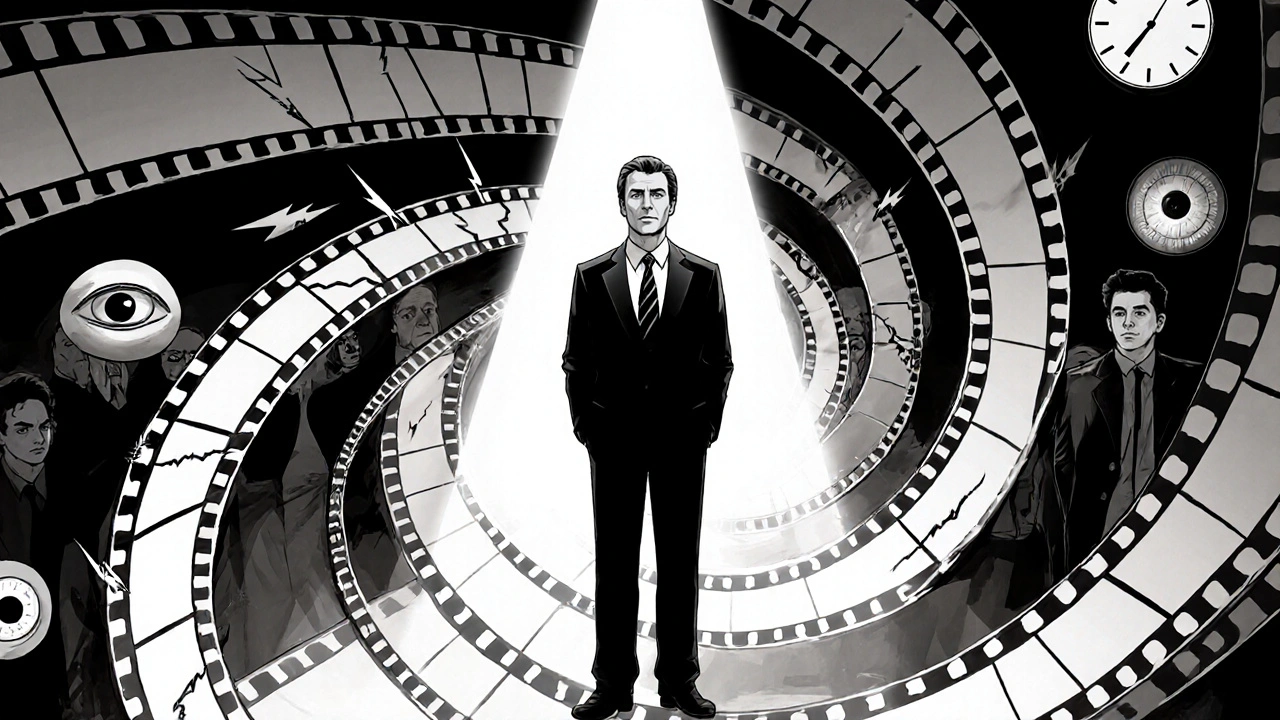When you watch a Martin Scorsese movie, you know it’s his before the credits roll. The quick cuts, the restless camera, the men screaming in narrow alleys-it’s not just style. It’s a fingerprint. That’s the heart of auteur theory: the idea that a director is the primary author of a film, not just a hired hand guiding actors and cameras. This isn’t about who wrote the script or funded the project. It’s about who made the film feel like it could only have come from one person.
Where Did Auteur Theory Come From?
Auteur theory didn’t start in Hollywood. It was born in French film magazines in the 1950s, especially in Cahiers du Cinéma. Critics like François Truffaut and André Bazin were tired of seeing movies as just products of studios. They noticed that some directors-like Alfred Hitchcock, Jean Renoir, and Howard Hawks-kept returning to the same themes, visual tricks, and emotional tones, no matter what studio they worked for or what script they were given.
Truffaut’s 1954 essay, A Certain Tendency of the French Cinema, was the bombshell. He argued that a great director transforms even a weak script into something personal. Hitchcock’s obsession with mistaken identity? That wasn’t the writer’s idea-it was Hitchcock’s. John Ford’s lonely landscapes? Not just setting. A mood. A worldview.
Back then, Hollywood treated directors like carpenters: show up, build the set, nail the scenes together. But these French critics said: no. Some directors didn’t just build houses. They designed them to feel like home.
What Makes a Director an Auteur?
Not every director is an auteur. You can’t just call yourself one. There are three things that separate the true auteurs from the rest:
- Technical competence - They know how to shoot, frame, and edit. Not just well-intentionally. Their choices serve a larger vision.
- Distinctive style - Recurring visual or narrative patterns. Wes Anderson’s symmetrical shots. David Lynch’s dream logic. Kathryn Bigelow’s kinetic tension. You recognize it within seconds.
- Internal meaning - A consistent theme that runs through their work. For Clint Eastwood, it’s guilt and redemption. For Hayao Miyazaki, it’s the tension between nature and industry. For Pedro Almodóvar, it’s family as both prison and salvation.
These aren’t just quirks. They’re the director’s signature. Like a painter’s brushstroke or a novelist’s voice.
Take Paul Thomas Anderson. His films span crime dramas, romantic comedies, and religious epics. But if you watch There Will Be Blood, Boogie Nights, and Phantom Thread back-to-back, you’ll see the same DNA: characters who are desperate, isolated, and clawing for control. The camera lingers too long. The music swells at the wrong moment. The silence screams. That’s not coincidence. That’s control.
Why Does It Matter Who the Author Is?
Before auteur theory, critics treated films like factory output. The studio made the movie. The writer wrote it. The actors acted. The director just made sure the lights worked.
Auteur theory flipped that. It said: the director is the one who makes the final decisions that turn a script into a living thing. They choose the color palette. The pacing. The music. The way a character looks at the camera before they die. Those aren’t technical choices. They’re emotional choices.
Think of Vertigo. The swirling camera. The green tint on Kim Novak’s dress. The way James Stewart’s character keeps trying to remake his lover into someone else. That’s not just a thriller. It’s a psychological portrait of obsession. And it’s all there because Hitchcock decided it should be.
Without auteur theory, we’d still be talking about movies as products. Now we talk about them as art. And that shift changed everything.

Who Are the Modern Auteurs?
The idea didn’t die with the French New Wave. It just moved. Today, you can spot auteurs in every corner of cinema:
- Roman Polanski - Isolation, paranoia, and the collapse of control. His characters are always trapped, physically or mentally.
- Chloé Zhao - Quiet moments. Real people. Nature as a silent character. Her films feel like documentaries, even when they’re scripted.
- Jordan Peele - Horror as social metaphor. The way he uses silence, mirrors, and suburban normalcy to expose hidden racism.
- Greta Gerwig - Female interiority. The way she captures teenage anxiety, maternal guilt, and the ache of growing up without ever spelling it out.
- Yorgos Lanthimos - Absurd dialogue. Cold lighting. Characters who speak like robots but feel like broken humans.
These directors don’t just make movies. They make worlds that only they could imagine. And audiences go back to them not because of the stars or the plot, but because they trust the voice behind the camera.
Does Auteur Theory Still Hold Up?
Of course, it’s not perfect. Critics have pointed out flaws for decades.
First, it ignores writers. Blade Runner 2049 is Denis Villeneuve’s film-but the script was co-written by Hampton Fancher and Michael Green. Does that make it less his? Or does his vision shape the words into something new?
Second, studios have more control now. Streaming platforms demand formulas. Producers demand test screenings. A director can’t always make the film they want. That’s why some auteurs now work in TV-where they can have full control over 8-10 hours instead of two.
Third, it’s often male, Western, and white. Many great female, non-Western, and independent filmmakers were left out of the original canon. That’s changing. Now we see auteurs like Apichatpong Weerasethakul from Thailand, Céline Sciamma from France, or Lulu Wang from the U.S.-each with their own distinct language.
But here’s the thing: even when a director is limited, the best ones still find ways to leave their mark. Look at Christopher Nolan. He works with massive budgets and studio demands. Yet you still know it’s him: non-linear time, practical effects, Hans Zimmer’s bass-heavy scores, the quiet hero who sacrifices everything. He’s not fighting the system. He’s bending it to his rhythm.

Why You Should Care About Auteur Theory
You don’t need to be a film student to appreciate this. Auteur theory helps you watch movies differently.
Instead of asking, “Was it good?” you start asking, “Who made this? What do they keep coming back to? Why does this feel different from everything else?”
It turns watching into a conversation. You begin to notice patterns. You start to recognize when a director is pushing boundaries, or when they’re repeating themselves. You learn to trust a filmmaker’s voice-even if the story doesn’t make sense on paper.
That’s why people rewatch There Will Be Blood or Amélie or Parasite again and again. It’s not just the story. It’s the hand behind it. The mind that shaped every frame. The signature that says, “This is mine.”
What If You’re Not a Director?
Even if you’re not making films, auteur theory teaches you something valuable: creative ownership.
Whether you’re writing, designing, coding, or even parenting-you leave a signature. The way you structure your sentences. The colors you choose. The rhythm of your routines. The small decisions that add up to something unmistakably yours.
Auteur theory isn’t about fame or control. It’s about consistency. About having something to say, and saying it in your own voice-even when the world tells you to sound like everyone else.
Is auteur theory still relevant in today’s Hollywood?
Yes, but differently. Big studios still push franchises and formulas, but the best directors-like Denis Villeneuve, Greta Gerwig, and Jordan Peele-still carve out space for personal vision. Many now turn to streaming platforms, where they can control entire seasons instead of just one film. Auteurism isn’t dead; it’s adapted.
Can a screenwriter be an auteur?
Traditionally, no. Auteur theory focuses on the director as the final creative force. But some writers, like Charlie Kaufman or Noah Baumbach, direct their own scripts and blur the line. When a writer controls both the story and the visuals, they function as auteurs-even if they didn’t start out that way.
Does auteur theory ignore the work of actors and cinematographers?
It does, which is one of its biggest criticisms. But the theory doesn’t deny their skill-it just says the director is the one who chooses them, guides them, and integrates their work into a unified vision. A great cinematographer doesn’t make the film; they make the director’s vision visible.
Are there female auteurs in film history?
Absolutely. Agnès Varda, Claire Denis, Kathryn Bigelow, and Chantal Akerman were all recognized as auteurs long before the 2010s. The early canon was male-dominated because of who had access to resources-not because women couldn’t be auteurs. Today, directors like Céline Sciamma and Lulu Wang are expanding what the term means.
How do I spot an auteur in a movie?
Watch three films by the same director. Look for recurring visuals, themes, or emotional tones. Does the camera always hover too close? Do characters talk in circles? Is there a specific color that keeps appearing? If the same patterns show up across different genres and stories, you’re likely seeing an auteur’s signature.

